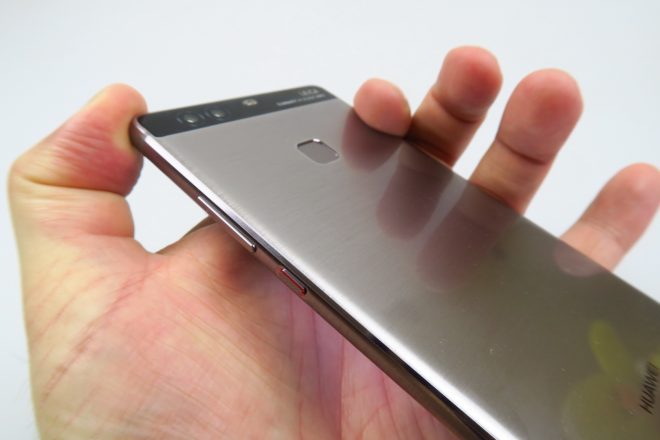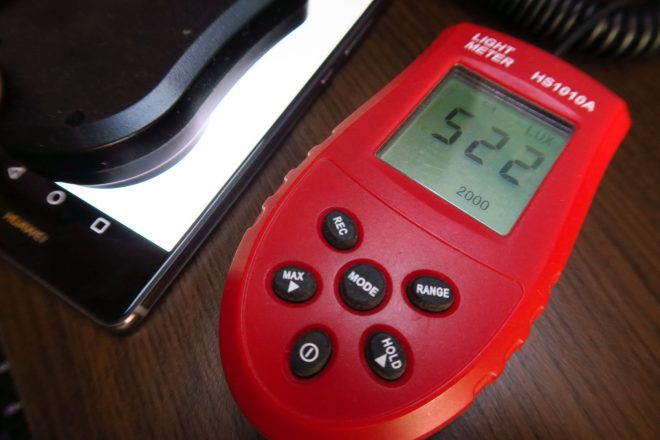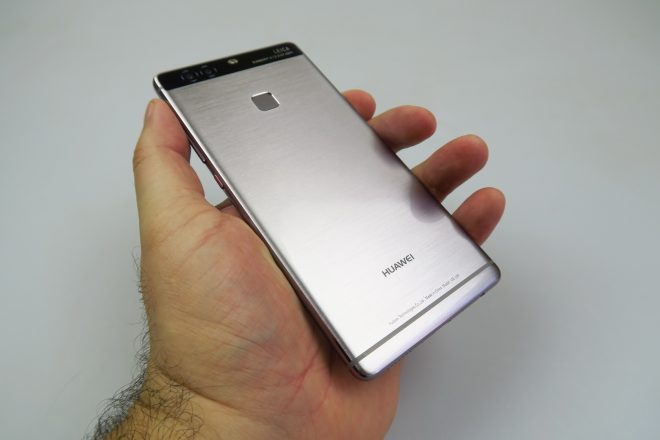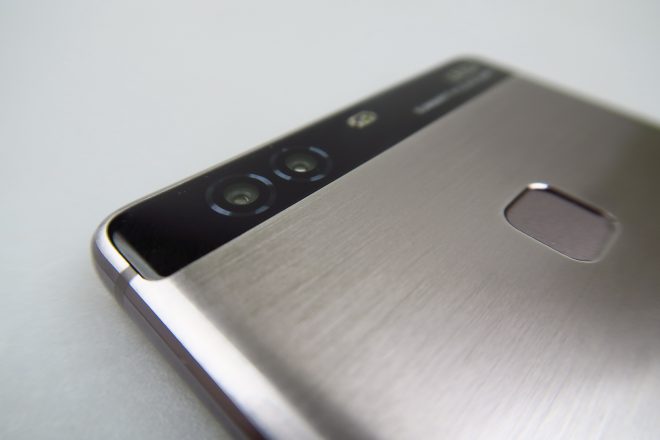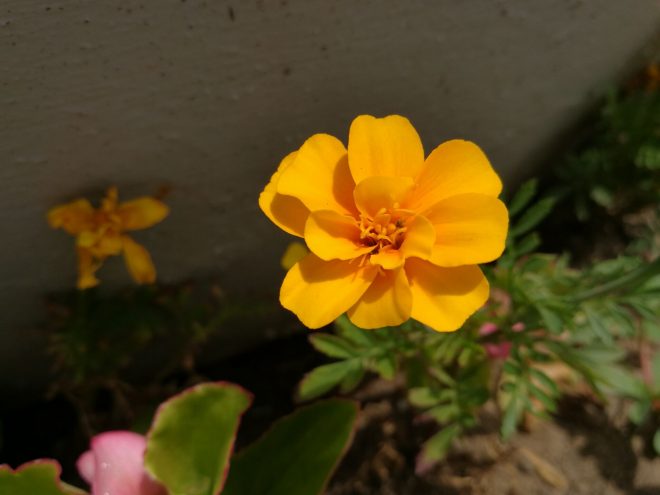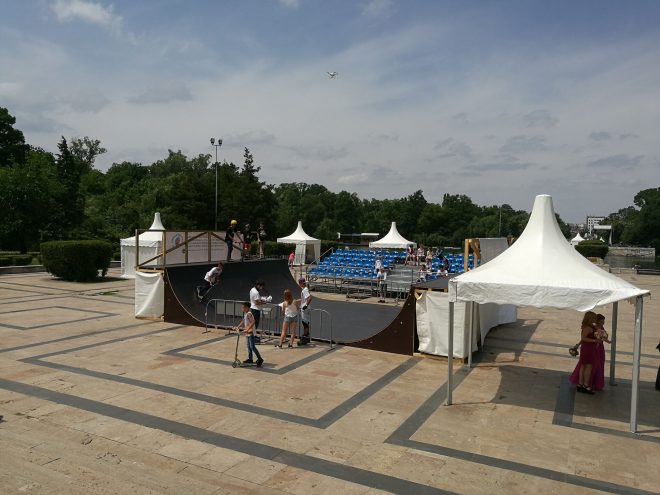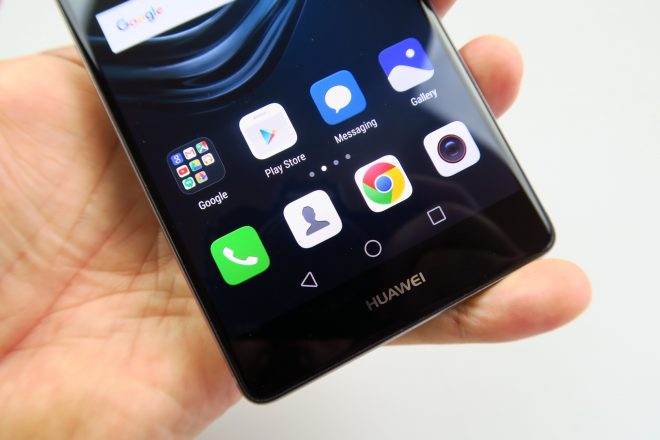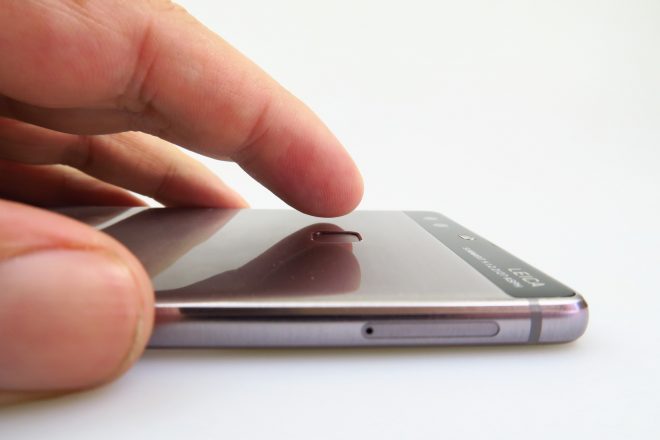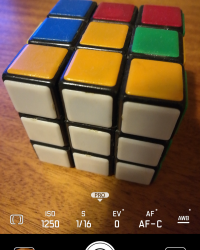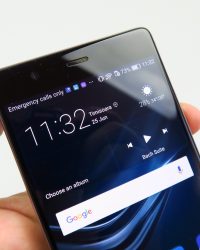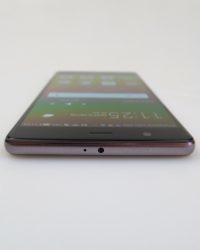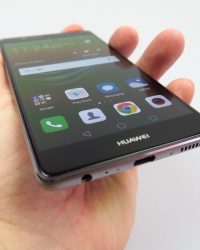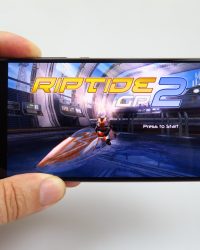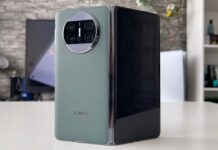Huawei P9 was a very solid phone, there’s no denying in that, but it didn’t debut alone, as it had the P9 Plus as launch companion. It’s the higher end and bigger version of the P9 and today we’re ready to review it for you. We already reviewed the Huawei P9 and P9 Lite, so this completes the trio. Priced at $800 on Amazon, this device was announced in April and stands out through the dual back camera and 3D Touch enabled AMOLED screen.
Design-wise, we get a bigger P9, jumping from 5.2 inches in diagonal to 5.5 inches. The thickness is 6.98 mm, great for such a diagonal and pretty much on par with the P9, while the weight goes up to 162 grams from the P9’s 144 grams. Huawei P9 Plus uses a metal unibody case, with a solid build and it’s pretty comfy phone to hold and use, even with one hand.
Buttons provide good feedback and we also get a shiny back, that may seem like glass, but it’s still metal. The device is also a bit slippery and a fingerprint magnet, just a tad. Available in gold, grey and white, this smartphone manages to be slimmer and lighter than the iPhone 6S Plus, in spite of the same diagonal.
It has skinny bezels and it’s to the P9 what the Galaxy S7 Edge is to the S7. There’s a 2.5D glass panel upfront and a flat camera area at the back, in spite of the high tech it features. Diamond cut edges look great and the P9 Plus is a comfy and elegant phone, clearly above everything that HTC and Apple have to offer right now.
Now let’s talk about the display. This handset brings a 5.5 inch Super AMOLED Full HD panel with 2.5D glass, compared to the P9’s IPS LCD 5.2 incher with the same res. Another piece of novelty is the 3D Touch-style tech, called Press Touch here, with 18 supported apps. The video player on offer here comes with DTS sound and play speed options.
The actual screen experience involves good brightness, crisp image, deep blacks and vivid colors. The contrast is so-so, especially because in full sunlight the screen doesn’t seem impressive. View angles are wide and pixels are of the Pentile Matrix variety. We used a luxmeter to measure the screen’s brightness, achieving 522 LUX, which is a pretty solid value, beating the P9’s 496 LUX and the Nexus 6P, as well as the HTC 10. Still, it scored below the Xiaomi Mi 5.
Settings for the screen include View Mode (Small, Medium or Large), font, brightness, Color Temperature (Warm, Cold or you can pick a hue from a circle), plus the Color Mode (Normal or Vivid). Press Touch is a technology that lets you apply various degrees of pressure on the screen, with various effects. Among the supports apps are the Camera, Phone, Note and Calendar, each of them displaying a small window of options once you apply pressure on the icon.
There’s also the function to press on the screen corners to trigger certain apps and features and one can apply extra pressure on a photo to zoom into it. Pressure sensitivity can be setup up and that’s pretty much everything that Press Touch does. Overall, this is probably the best screen that Huawei has to offer right now.
Moving on to other hardware, this model uses an octa core HiSilicon Kirin 955 CPU, the same one from the P9, with a Mali T880 MP4 GPU. There’s 4 GB of RAM on offer here, 64 GB of storage and a microSD card slot too. The device doesn’t suffer from lag, it has a fluid UI and good performance. Games like Riptide GP2 work just fine and there’s no stuttering, messed up texture or frame drop.
We also performed some benchmarks on this smartphone, surpassing the HTC One M9 in Quadrant, as well as the OnePlus 2, while in AnTuTu 6 we managed to beat any other Huawei we tested till now. In 3DMark we were on P9’s level, while in GeekBench 3, the multi core sub test we even beat the Galaxy S7. Then we proceeded to perform a temperature test, reaching 38.9 degrees Celsius, after running GFXBench or 35.7 degrees after playing Riptide GP2 for 15 minutes, so there’s no overheating here.
On the battery front, we’re dealing with a 3400 mAh unit, up from the P9’s 3000 mAh battery and our video playback test brought us 10 hours and 32 minutes, a solid result from the battery. It beats the likes of LG G5, Galaxy S6 and Huawei Mate 8, but scores below the iPhone 6. In PCMark we reached 8 hours and 45 minutes, a great result that placed us above the Galaxy S7 and Note 5, but below the Huawei Mate 8.
Charging was actually surprising, only requiring 1 hour and 58 minutes, which is quite good and superior to the LG G3, Huawei Honor 6 and Xperia Z5. Battery Settings include Power Plan, with its sub modes: Performance, Smart and Ultra Power Save. The latter offers a black and white interface and only access to the core features, like calling and texting.
There’s also a feature called ROG Power Save, that takes the resolution down to 720p, in order to save power. Other features include Protected Apps, that can run with the screen off, optimization, the option to close vampire apps and WiFi on in sleep mode. Good battery overall. Time to discuss acoustics!
Huawei P9 Plus has an interesting setup, that in a vertical position uses the earpiece as a tweeter and the bottom speaker as the woofer. There’s also DTS acoustics, but sadly no equalizer. The music player is typical for EMUI, with a minimalistic UI and in landscape the audio setup changes, as we are offered “pure stereo”. Overall, this feels a bit like the tech on the HTC 10, since it involves the earpiece as speaker.
The actual listening experience brought us loud volume, good clarity, great voice, some distortion, nice high notes and it was actually loud enough to cover a conversation in a medium sized room. We used a decibelmeter to measure the power of the speaker and got up to 87.1 dBA, which is great and surpasses the P9’s 83.9 dbA, as well as the LG G5 and HTC One M9.
Headphones keep the EarPods styling from the past years and they’re not very comfy. They’re loud and clear and offer good isolation though. P9 Plus offers no FM radio in case you were wondering. Settings include DTS and Stereo+. So time to see what the dual camera holds for us. It’s the same dual camera with Leica tech from the Huawei P9, with 12 MP resolution for each sensor.
We get F/2.2 aperture, BSI, CMOS tech, dual tone flash and laser focus. Each sensor is a Sony IMX 286, but one captures color and the other black and white imagery. Pixels measure 1.25 microns here and Huawei took care of image processing with a dual core ISP, dedicated DSP and post processing power galore. Selfies are taken with an 8 megapixel F/1.9 shooter, an upgrade from the P9’s 8 MP F/2.4 front cam.
The camera app starts up fast, offers fluid zoom, fast-ish focus and quick picture taking. The UI remains the same as on the P9, so if you pull the right side tab, you can access the Pro Mode. That one includes tweaks for white balance, autofocus, exposure, shutter, ISO, metering and then to the left we find the front camera shortcut (with a beauty slider), filters and Color options (Standard, Vivid and Smooth).
Also there is a shallow depth of field setting with various degrees of blur. Swiping up triggers the main capture modes, like Beauty, Beauty Video, Light Painting, Watermark, Monochrome, HDR, Night Shot, Slow Motion, Panorama, Document Scan, Time Lapse and Audio Note. Swiping down reveals the options, like resolution, GPS, grid, timer, voice control, smiles, object tracking, saturation, contrast and brightness.
I have to highlight there’s no 4K video capture here or optical image stabilization. We did take quite a few shots (gallery here) with this smartphone during the day, a very sunny day of 35+ degrees Celsius, so we had to restart the handset multiple times, as it was getting too hot. We registered good zoom quality and achieved great closeups, plus a great exposure of shots and nice dynamic range.
Closeups were actually perfect, something we also noticed on the P9 and colors were well calibrated. Black and white shots were artsy and great looking, with excellent brightness and texture. Panorama had a pretty good resolution, of 13.248 x 2304 and a lot of details, while the landscape shots were also pretty well detailed.
The HDR managed to get rid of the sun burn, pretty powerful one on that torrid day. Selfies were crisp and the HDR of birds brought us great colors. Back to the selfies for a bit, the front camera was so good, I actually used it to review a set of wireless headphones. We played with focus using that shallow depth of field and the blur was a bit of hit and miss, remaining rather gimmicky.
The camera behaved great in the shade as well and it clearly surpasses all other Huawei models we ever tested so far, plus all the ASUS ZenFones and Xiaomis. The differences between this and the LG G5 are actually quite small and have to with wide angle lenses and better colors for the LG model. Meanwhile, the P9 Plus has extras like the antsier focus play and black and white thingie.
Low light photo capture had good quality, but the Galaxy S7 caught more light, that’s for sure. The flash was great and everything was very clear. Street light halos were at a medium level and there was some blur here and there, but nothing major. It’s certainly not on par with the excellent HTC 10 and its night time capture, but it can compete with last year flagships.
Keep in mind that it’s also pretty close to the Huawei Mate 8 performance, which was a bit of a landmark of night time picture taking. Video is shot in Full HD, MP4 format, in 30 or 60 FPS, at 17 or 34 Mbps bitrate respectively. We took some very nice slow motion clips and the 30 FPS video had some wind problems, so the microphone is not exactly top notch.
There’s some image burn here, on account of the sun and the good news is that focus is good, but digital stabilization is so so. The level of details in the distance was underwhelming. 60 FPS videos had great colors and clarity, as well as exposure and texture and have that cinematic look going for them. The microphone was good when it came to capturing music during a concert, but once again I felt that the videos were shaky and there was quality loss when zooming in.
The sky was a bit too white to be called “blue” and I feel that the P9 Plus was a bit underwhelming in the video department. It’s placed below the Nexus 6P and Galaxy S7 pretty clearly. Low light videos had poor zoom, OK clarity and brightness, good colors and they were shaky. They had fuzzy street lights and in spite of everything, this model films better than most Huaweis.
The lack of 4K and OIS is a problem. We then tested the web browser on board, Chrome in this case, which is fast and provided great results in benchmarks. The virtual keyboard was also tested, offering comfy input and Swype. On the connectivity front, this model has a dual SIM and single SIM version and it comes with 4G LTE of the TDD and FDD kind.
There’s also NFC, infrared, GPS, Glonass and WiFi a/b/g/n/ac, plus WiFi Direct. Bluetooth 4.2 and USB Type C round up the specs list. Calls are loud and clear and we have a triple antenna setup to ensure great signal. The microphone is good and we also get a harassment filter, virtual HD call and Pocket Mode. Speed dial is also available, plus WiFi+, used to connect to familiar routers faster.
We also did a Speedtest benchmark, with great results in WiFi, achieving 200+ Mbps download speeds and 24 Mbps upload. The OS, UI and apps were also part of our tests. You have to know that this handset runs Android 6.0 Marshmallow with EMUI 4.1 on top. It’s the exact same experience as on the P9 and we get a flat and bland color UI.
Media controls and shortcuts are placed in the lockscreen and multitasking is offered via a horizontal line of thumbnails. Pinching the homescreen triggers options like wallpapers, widgets (many stock), transitions and layout. The dropdown portion shows notifications as a timeline based on hours and Quick Settings, too.
The core Settings have to do with Home Screen Style, fingerprint scanner, Smart Assistance (navigation bar, floating dock, motion control, smart screenshots with the knuckles and more). You can also draw a letter to trigger a certain app, split the screen in two by tracing a line with a knuckle and use a One hand UI or voice control.
The fingerprint scanner has a fast setup, lets you unlock the screen or access a safe area or lock apps. You can also use it to browse pictures, show the notification area, all of those by swiping on it. Unlocking the screen is very fast, using this sensor. As far as the apps go, we have 37 of them preinstalled, which is close to bloatware, but we’ve seen much bigger app lists than that.
Among the main apps we mention Themes, Phone Manager, Health, Notepad or Recorder, the typical Huawei affair.
Now it’s time for the verdict!
Here are the Pros:
- beautiful design
- bright screen
- good performance
- not bad battery
- fast charging for USB Type C port
- excellent audio
- very good pictures
- artistic monochrome shots
- great connectivity
- nice gestures and fingerprint scanner
And the Cons:
- no OIS or 4K video
- video capture could be better
- not many changes from previous EMUI version
- slightly slippery
- almost bloatware
The P9 Plus has the great advantage of correcting the few P9 flaws, but it does that at a price and we mean money here. The handset is no longer too light for its own good like the P9, the battery is certainly better and performance is good. It’s the best Huawei phone money can buy right now, but more appealing models are just around the corner, since IFA is coming.
Basically, this feels like a very well done flagship, with excellent camera, design, performance and battery. Video capture is its only weak spot. You can find its updated price here.



